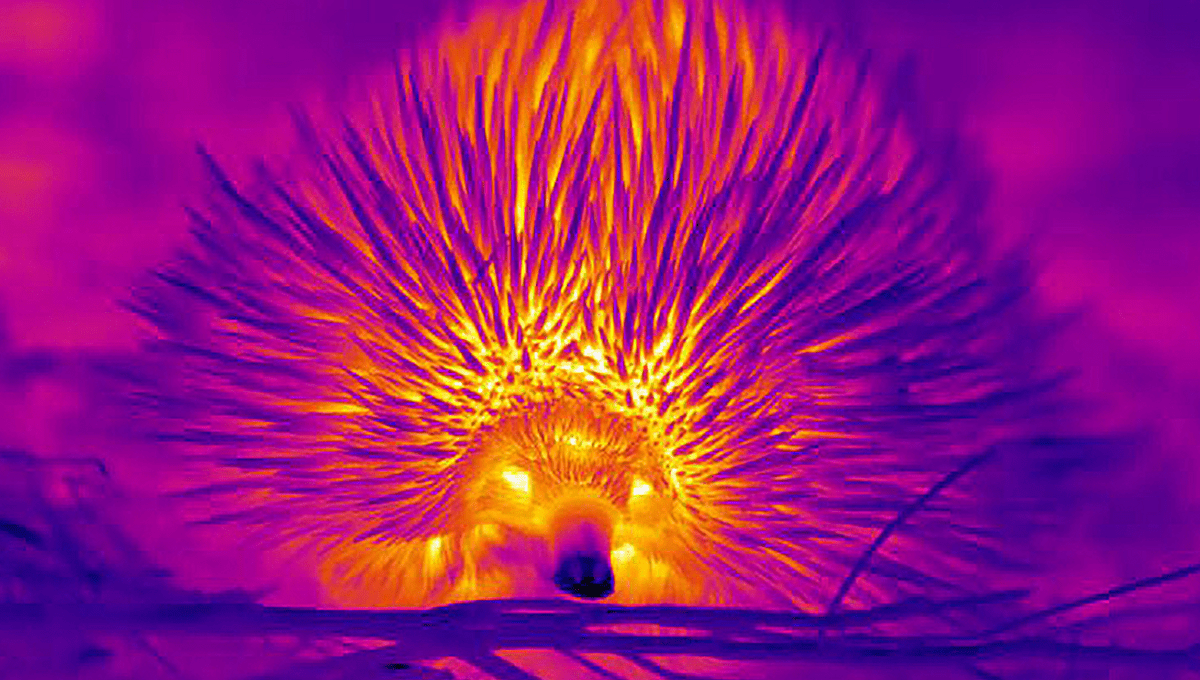
One of Australia’s most unusual mammals is actually even weirder, according to a new study looking at how the short-beaked echidna (Tachyglossus aculeatus) can survive in the harsh heat of the Australian outback. Previous studies have thought that since echidnas are not able to sweat, pant, or lick as a form of heat loss in the same way as more typical mammals, they have a low thermal tolerance where a core body temperature of 38°C (100.4°F) and an air temperature of only 35°C (95°F) would be considered lethal for these monotremes.
These studies suggest that echidnas survived extreme temperatures in Australia due to behaviors where they avoided the hottest temperatures of the day and switched to a more nocturnal lifestyle during the summer months. However, echidnas have been observed resting in hollow logs where the air temperature exceeds that lethal threshold – so how have they managed to survive?
The team used infrared thermography and filmed a total of 124 echidnas over the course of a 12-month period for a total of 34 days. The team found that the little spiny critters have a higher thermal tolerance than previously thought and can shelter in hollow logs at air temperatures of 40° C (104°F) because of some nifty adaptations.
The team suggests that the echidnas can survive at these higher temperatures because of thermal and evaporative windows, such as pressing the inside of their leg surfaces to cool soil to aid in heat loss. They further suggest that the echidnas are able to move their spines in different ways, exposing the skin beneath and giving a larger surface area to cool themselves down.
“We also found their spines provide flexible insulation to retain body heat, and they can lose heat from the spineless areas on their underside and legs, meaning these areas work as thermal windows that allow heat exchange.” said lead author Dr Christine Cooper, from Curtin’s School of Molecular and Life Sciences in a statement.
The researchers also identified the beak tip of the echidnas as an evaporative window. The tip is kept moist to aid in electroreception during foraging behavior but has the added benefit of evaporative cooling of the blood vessels within the nose. At high air temperatures, the echidnas blow mucus bubbles to add moisture to the tip of their beaks, further aiding in heat loss.
“Echidnas blow bubbles from their nose, which burst over the nose tip and wet it. As the moisture evaporates it cools their blood, meaning their nose tip works as an evaporative window,” Dr Cooper added.
The team concluded that echidnas have more sophisticated thermoregulation abilities than previously thought and suggest that this has helped them become the most widespread Australian mammal, and therefore survive temperatures thought to be over their lethal limits.
The paper is published in Biology Letters.
Source Link: Echidnas Blow Snot Bubbles From Their Snoots To Keep Cool